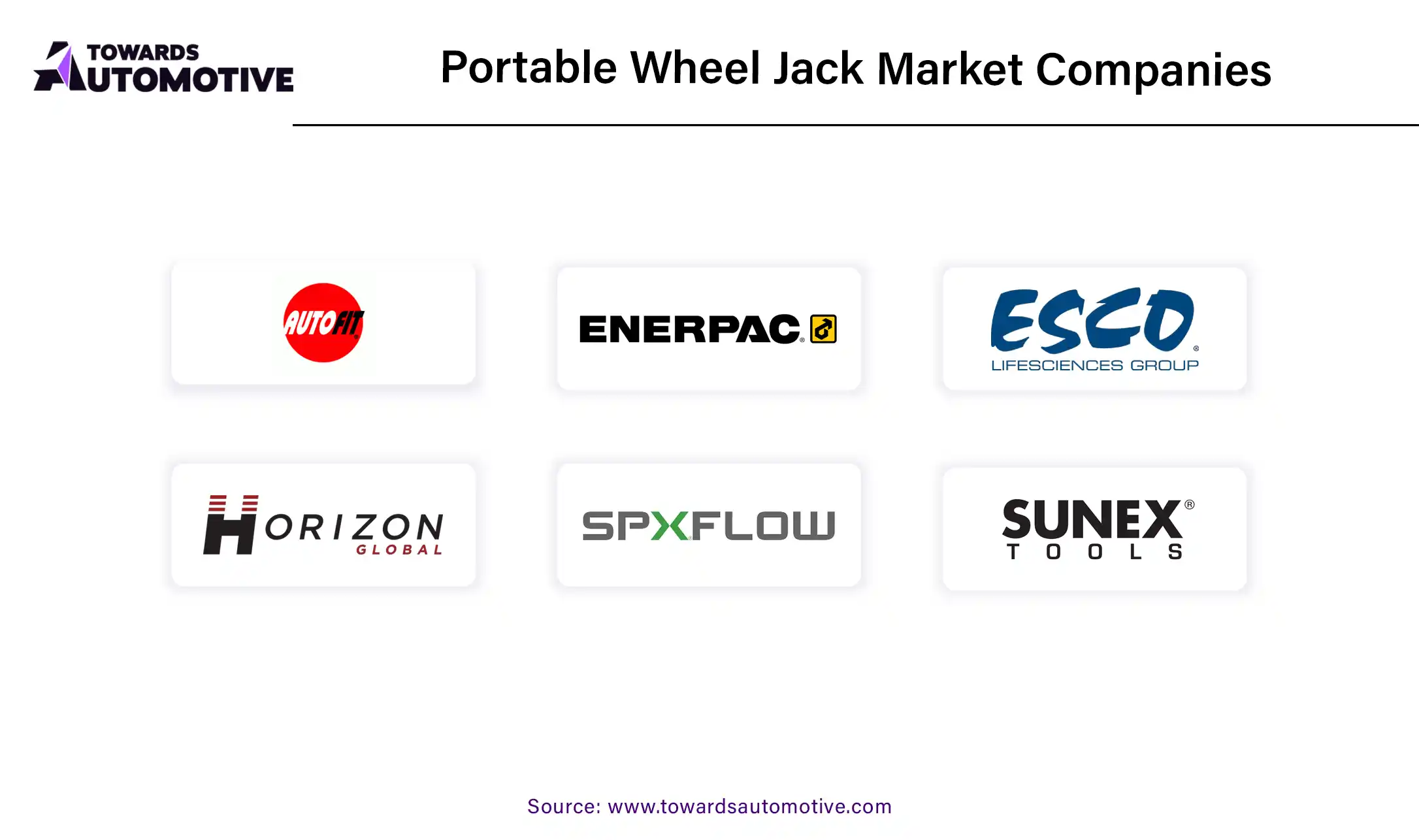October 2025
The portable wheel jack market is set to grow from USD 9.88 billion in 2025 to USD 16.27 billion by 2034, with an expected CAGR of 5.70% over the forecast period from 2025 to 2034.The growing awareness of consumers towards regular car maintenance coupled with expansion of the automotive sector is playing a vital role in shaping the industrial landscape.
Additionally, the rising sales of electric vehicles along with numerous subscription-based offers provided by numerous certified workshops is likely to shape the industry in a positive direction. The rapid adoption of handheld wheel jacks in developing nations as well as increasing proliferation of Do-It-Yourself (DIY) culture is expected to create ample growth opportunities for the market players in the upcoming days.

The portable wheel jack market is a prominent branch of the automotive equipment industry. This industry deals in manufacturing and distribution of portable wheel jacks in different parts of the world. These jacks are powered by different sources including hydraulic, electric, air, pneumatic and some others. It finds application in various end-user sectors comprising of automotive, marine, construction, mining, aerospace, railway and some others. The growing investment by car manufacturing brands for opening new service centers in different parts of the world has contributed to the industrial expansion. This market is expected to rise significantly with the rise of the automotive aftermarket sector in different parts of the globe.
The major trends in this market consists of partnerships, handheld wheel jacks, growing sales of luxury cars.
Several companies are partnering with each other for developing advanced wheel jacks to cater the needs of numerous end-users.
The automotive workshops are adopting handheld wheel jacks in their daily operations to enhance the tire changing process.
The growing sales of luxury vehicles has increased the demand for advanced wheel jacks to change expensive automotive components.
The hydraulic segment dominated the market. The growing application of hydraulic wheel jacks for lifting heavy objects has boosted the market expansion. Additionally, rapid adoption of these wheel jacks in modern garages and repairing shops for regular car maintenance activities is further adding to the industrial growth. Moreover, numerous advantages of hydraulic wheel jacks including smooth operations, higher lifting capacity, portability, durability and some others is expected to drive the growth of the portable wheel jack market.
The electric segment is expected to rise with a considerable CAGR during the forecast period. The rising use of electric wheel jacks for changing car tires has driven the market growth. Also, the growing emphasis of market players for developing scissor jacks and floor jacks for handling heavy-duty applications in motor workshops is shaping the industry in a positive direction. Moreover, several benefits of these wheel jacks including versatility, speed, convenience, enhanced safety and some others is expected to foster the growth of the portable wheel jack market.
The automotive segment held the largest share of the industry. The growing demand for advanced wheel jacks from automotive service centers has driven the market expansion. Additionally, the increasing cases of car breakdown in isolated areas coupled with rapid adoption of hydraulic wheel jacks in the automotive sector is playing a vital role in shaping the industrial landscape. Moreover, partnerships among market players and automotive companies for deploying portable wheel jacks is expected to propel the growth of the portable wheel jack market.
The aerospace segment is expected to rise with a considerable CAGR during the forecast period. The growing investment by aerospace brands such as Airbus, Boeing, Northman Grumman and some others for opening new service centers is playing a crucial role in shaping the industry. Additionally, the rapid adoption of electrically-powered wheel jacks in the aerospace sector has boosted the market growth. Moreover, collaborations among wheel jack manufacturers and aerospace brands for deploying advanced jacks in airplane service centers is expected to drive the growth of the portable wheel jack market.

North America generated led the portable wheel jack market. The growing demand for luxury vehicles in several countries such as the U.S. and Canada has driven the market expansion. Additionally, rapid investment by public companies for developing the marine sector along with rise in number of mining centers is further playing a crucial role in shaping the industrial landscape. Moreover, the presence of several market players such as Sunex Tools, Enerpac, Horizon Global and some others is expected to propel the growth of the portable wheel jack market in this region.
Asia Pacific is expected to grow with a notable CAGR during the forecast period. The rise in number of workshops in various nations such as India, China, Japan, South Korea and some others has boosted the market growth. Also, rapid investment by government for strengthening the railway infrastructure coupled with increasing awareness about pneumatic safety is likely to shape the industry in a positive direction. Additionally, the presence of numerous market players such as Jiaxing Datong Machinery Co., Ltd, Osaka Jack Co. Ltd., Roljack Asia Limited and some others is expected to drive the growth of the portable wheel jack market in this region.

The portable wheel jack market is a developed industry with the presence of several dominating players. Some of the prominent companies in this industry consists of Autofit GmBH, Enerpac, Esco, Horizon Global, SPX Flow Inc, Sunex Tools and some others. These companies are constantly engaged in developing portable wheel jacks and adopting numerous strategies such as acquisitions, joint ventures, collaborations, launches, partnerships, and some others to maintain their dominance in this industry.

By Power Type
By Application
By Region
October 2025
April 2025
March 2025
March 2025
We offer automotive expertise for market projections and customizable research, adaptable to diverse strategic approaches.
Contact Us